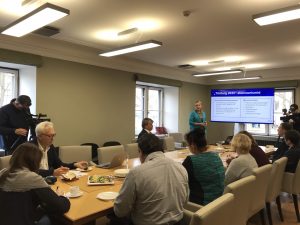The Foresight Centre study “Platform Work in Estonia in 2021” shows that the government lacks a detailed overview of platform workers and the extent of the tax gap relating to it. If the share of platform work grows even more in the future, an increasing part of such workers will remain without social protection.
News
Encouraging the people working through digital platforms to use business account could annually bring up to 68 million euros in tax revenues into the state budget, shows the Foresight Centre study “Platform Work in Estonia in 2021”, which was published on 2 June.
The incomes of the people who work through digital platforms are lower than the Estonian average, shows the Foresight Centre study “Platform Work in Estonia in 2021”, which was published on Wednesday, 2 June.
One of the most important findings in the study “Labour Market 2035” of the Foresight Centre was that understanding the needs of talents and recognising their special skills and knowledge is an important challenge for the future labour market.
The study into the future of the labour market, conducted by the Foresight Centre, has been going on for nearly one and a half year, and is coming to a close. The final report of the project, “Labour Market 2035”, including four scenarios, has been completed.
The study commissioned by the Foresight Centre shows that during the next couple of decades, the working age population will decrease, but as people are participating in the labour market more actively, the percentage of working people in comparison to that of dependants will remain the same or even grow.
Before starting to draft scenarios on what the labour market in Estonia until 2035 will be like, it is necessary to understand what kind of changes are to be expected on the basis of existing evidence. Within the framework of the future of work project, we will study both the demographic changes and the changing of the nature of work, and afterwards we will place the scenarios in the context of social system and taxation.

 An independent think tank at the Riigikogu
An independent think tank at the Riigikogu 


 Johanna Vallistu
Former Expert of Foresight Centre
Johanna Vallistu
Former Expert of Foresight Centre 

